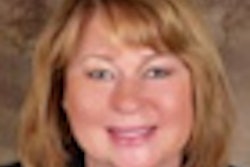
Ten years from now in a remote Arizona town, an unemployed single mother arrives in a clean, bright clinic. An hour later she leaves with her badly decayed tooth removed and her son's cavity filled. It's a scene that could play out today in any dental clinic in the U.S., with one key difference: There is no dentist in this office.
Such visions of the future are tearing U.S. dentistry apart. One side believes the country desperately needs a new class of oral care professional, something between a dentist and hygienist, to help people who don't have access to dental services. The other side believes dentists alone can fill the gap.
In recent weeks, the battle has heated to new intensity. In Minnesota, a government working group is drafting regulations for a new "oral health practitioner." In Texas last month, the ADA House of Delegates approved funding to further the ADA's community dental health coordinator (CDHC) program. And in the Journal of the American Dental Association this month, a researcher presented evidence that dental health aide therapists (DHAT) in Alaska are already doing work on a par with full-fledged dentists.
No one denies that a serious problem exists; the debate centers on how best to fix it. Some believe the answer lies in government programs that make it possible for underinsured populations to afford dental care. Others say the key is to create a new type of provider that can go into underserved areas and perform many of the duties of dentists but without the same training or licensing requirements.
But this notion of the "superhygienist" has become a hot button as -- rather than working together to address the issue -- the ADA, the Academy of General Dentistry (AGD), and the American Dental Hygienists' Association (ADHA) are each developing their own concepts of what these care providers should and shouldn't be allowed to do. The ADHA is a proponent of the advanced dental hygiene practitioner (ADHP), the ADA is putting its muscle behind the CDHC, and the AGD has concerns about both.
Some might call it a turf war.
In an "Access to Care" white paper issued this summer, the AGD argues that "present efforts to institute independent midlevel providers -- lesser educated providers who are not dentists -- to provide unsupervised care to underserved patients are not only economically unfeasible but ... will provide lesser quality care to the poor."
But is this true? In the November JADA article, author Kenneth Anthony Bolin, D.D.S., M.P.H., audited the dental records of patients treated by dentists and DHATs in Alaska, and concluded that "no significant evidence was found to indicate that irreversible dental treatment provided by DHATs differs from similar treatment provided by dentists." He reviewed the records of 640 dental procedures performed in 406 patients in three health corporations and found "no significant differences among the provider groups in the consistency of diagnosis and treatment or postoperative complications" (JADA, November 2008, Vol. 139:11, pp. 1530-1535).
Writing in the same issue of JADA, however, Albert Guay, D.M.D., chief policy adviser for the ADA, questioned Dr. Bolin's findings and methodology. Noting that Dr. Bolin used only postoperative chart review, Dr. Guay argued that "An assessment of the quality and adequacy of clinical treatment requires much more than a chart review" (JADA, November 2008, Vol. 139:11, pp. 1536-1537).
DHAT, ADHP, or CDHC?
For many in the dental community, the issue is not the need for more care providers but how much clinical responsibility and independence they should have. DHATs, for example, are authorized to provide oral exams, preventive dental services, simple restorations, stainless steel crowns, and extractions, plus take x-rays -- all with just a high-school education and two years of training. (The ADA was so concerned about what it sees as potential risks with this model that it sued the Alaska Native Tribal Health Consortium, which oversees the DHAT program, in 2006 to block the program. The ADA lost that lawsuit.)
The ADHA's ADHP is an oral healthcare provider with a master's degree who works independently and is trained to administer the full range of services offered by dental hygienists, plus minimally invasive restorative services, extractions in emergent situations, and some prescriptions. First proposed in 2004, the ADHP initiative takes its cue from midlevel practitioner programs in medicine, particularly nursing.
"We wanted to create a model that we thought would be successful and that addresses the biggest needs in the dental world: restorative and preventive services," said Diann Bomkamp, R.D.H., B.S.D.H., president of the ADHA. "So we looked at this idea of the midlevel provider in dentistry, a model we don't have in U.S. dentistry at all -- although other countries have had midlevel providers for years -- and we felt that dental hygienists, because of our background in dental services, could fill the void."
For the last three years, the ADHA has lobbied at the state and federal levels to gain support and funding for the ADHP program and developed a set of competencies that schools can use in creating curriculums for ADHP programs. According to the ADHA, Fones School of Dental Hygiene in Bridgeport, CT, is now planning an ADHP education program, while Metropolitan State University in St. Paul, MN, has approved the first ADHP master's program and is slated to begin instructing students in mid-2009. Still, this is just the first step; state legislative and licensing issues still need to be addressed.
The ADA's CDHC is designed to take members of underserved communities (similar to the DHAT model) and train them to become part of the dental team, working under a dentist's remote supervision in schools, churches, senior citizen centers, and other community programs. Each CDHC will undergo an 18-month training program that will enable them to promote oral health and provide preventive services, including screenings, fluoride treatments, sealants, temporary fillings, and simple teeth cleanings. They will not excavate caries, although they will be able to place temporary restorations in cavities after removing debris with approval from the supervising dentist.
"CDHCs are community health workers with dental skills who work outside the dental clinic but come from the same community in which they serve," said Robert Brandjord, D.D.S., past president of the ADA and chair of the ADA committee charged with overseeing the CDHC program. "People are more apt to follow through on treatment if they have trust in someone from their own community. We believe this approach has great potential to help underserved populations."
The ADA House of Delegates agrees. At the ADA annual meeting last month, the delegates voted in favor of committing up to $5 million to support the continuation of the CDHC pilot programs and identifying outside sources of funding for three pilot sites. As a result, pilot testing is slated to begin next year in Oklahoma, Montana, and Michigan.
Difference of opinion
Despite such progress, however, the AGD -- which declined to be interviewed for this article -- is adamant that an independent (i.e., unsupervised) midlevel provider will undermine the preventive care model and lead to lesser quality of care. The AGD instead supports the notion of government, healthcare, and community representatives working together to promote oral health literacy, tax credits and other incentives for dentists to practice in underserved areas, and volunteer services.
"Removing the oversight of the dentist removes the one professional who has the overall knowledge and training to coordinate all aspects of treatment that patients might need," the AGD white paper states.
The white paper also emphasizes that midlevel provider models "fail minimum education standards," and it questions the economic realities of such models, noting that "independent midlevel providers will not be immune to the forces of supply and demand" and will likely find it "less economically feasible" to maintain an independent practice in underserved areas.
Dr. Branjord said he is "baffled" by the AGD's position. He noted that in September the AGD posted a video clip on YouTube about the CDHC in which "a lot of the things that were said were not true" (this video has since been removed from YouTube).
For example, "CDHCs are trained to work in clinic relationships, not private practice," he said. "They are not independent. In fact, neither the CDHC nor the ADHP is an independent provider."
However, Bomkamp pointed out that one of the key differences between the CDHC and ADHP is the notion of "direct supervision," which the ADHP model does not require -- something she sees as a clear advantage.
"Dentists are in short supply, and if the new midlevel providers had to work under direct supervision of the dentist, how will that help address the issue of access?" she said. "We're trying to find more places where people can gain entry to oral healthcare services, but if a dentist has to go [into the community] too, what good is that? It's going to cost more to have two providers there, plus it cuts into the time the dentist will have to do more complicated procedures."
Bomkamp added that while she cannot speak for the AGD, "I'm not sure why they are opposed to this. Maybe it's the comfort zone. People get used to working a certain way."
It is difficult not to see these polite differences of opinion masking deeper concerns. One dentist commenting in the DrBicuspid.com Forums discussion groups wrote, "Dentistry will continue to be vilified and ridiculed in the press until we start using legitimate studies as a basis for criticism or opposition to dental therapists. Our constant ranting about poor quality, risks to the public and other completely unfounded claims only makes us look like tradesmen attempting to protect our guild."



















